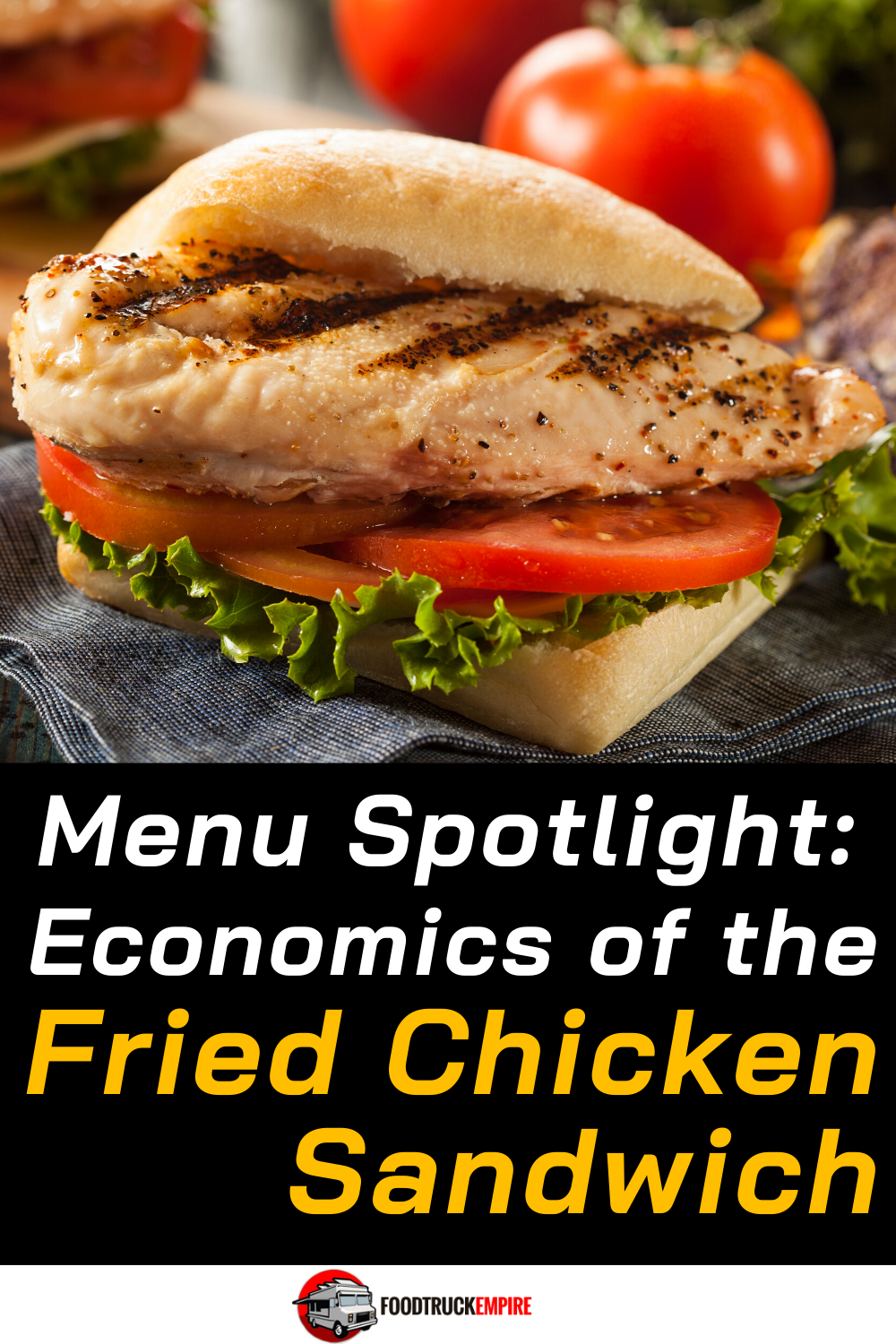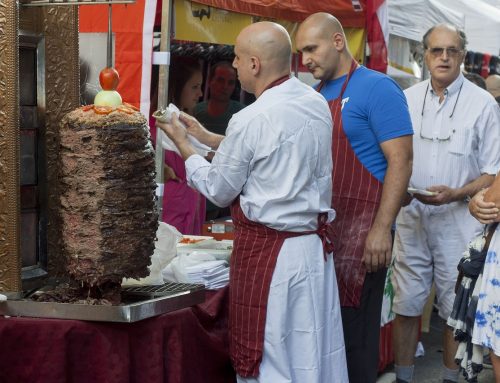Ask anyone that’s been following the ebbs and flows of the fast food marketplace for the last several years, and they’ll tell you: The once-humble fried chicken sandwich has emerged as the king of the drive-thru landscape.
Investigative Report: It seems like every quick-serve restaurant is rolling out their own fried chicken sandwich. But why? For one, people love it. Second, the 350% margins are extremely appealing. In today’s menu spotlight series, we dive into the economics of the fried chicken sandwich and share ways you can work this meal into your own menu.
Every new rollout of that classic combination of salty, crunchy fried chicken, lettuce and (sometimes) tomato, and a soft bakery-style bun seems to induce at least a few weeks of mass hysteria, among the fast food eating public; whether it’s lines for Popeye’s sold-out fried chicken sandwich stretching around the block, the quiet reliability of a classic sandwich from Chik-fil-A, or outrageous, headline-grabbing experiments like KFC’s now-legendary “Double Down,” fried chicken sandwiches continue to make headlines and spell big business for fast food chains.
We could offer a practical explanation for why the country has suddenly gone chicken sandwich crazy. After all, a fried chicken sandwich is a tried-and-true flavor combination that tastes incredible, and rewards the brain with salt and fat, as well as creaminess and crunchiness, all at once. Or we could get philosophical about this trend; we could have a highbrow discussion about how the escalating stunt-food wars at the various chains have consumers longing for a simpler time, when not everything was ranch-blasted, bacon-stuffed, or syrup-drizzled.
But instead, we want to focus on the reasons WHY the major fast food chains are aggressively pushing fried chicken sandwiches, the reasons why they’re one of the easiest-to-prepare, highest-margin items you may ever cook, and what the rollout of your own killer new fried chicken sandwich could mean for you and your business.
It’s All About the Margins
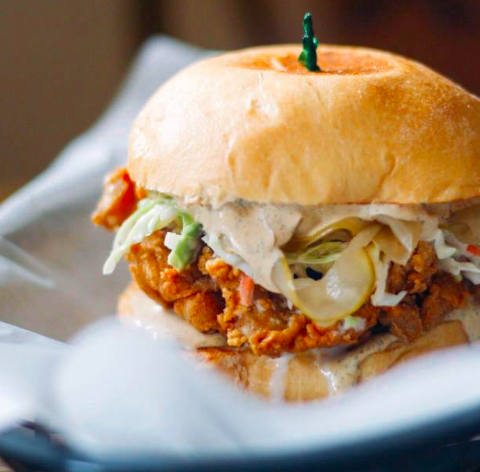
Chicken sandwich with premium coleslaw.
Fried chicken sandwiches are an ideal menu item for a food truck, for one main reason: They’re viewed by customers as an “artisanal” or “high value” item, even though the margins on them are absolutely ridiculous. Let’s look at a breakdown of the wholesale cost for each element:
- Chicken (Thighs or Breasts): 99 cents per pound, or about 50 cents per serving
- Good-quality brioche bun: Approximately 50-75 cents each
- Dredge, Lettuce, Tomato, Mayonnaise: Let’s be generous and say that these total another 50 cents per serving
- Total wholesale cost for a basic fried chicken sandwich: Around two dollars.
Now, a $2 fried chicken sandwich is practically unheard of, except for perhaps at the bottom of a fast food value menu, or maybe in the back recesses of an all-night convenience store.
Most of the time, and depending on how flashy you make your additional toppings, seasonings, and flavorings, you can safely sell a high-quality, handmade fried chicken sandwich for somewhere in the $8-$10 range.
This represents a profit per sandwich sold of at least $6-8 dollars per sandwich sold, or to put it another way, a percentage increase of somewhere around 350%. That’s some good math, right?
Now think about how good your profit-and-loss statement will look if you’re selling 100 or more of these bad boys per day.
Prep and Storage Considerations
First, a few words about the Breasts vs. Thighs debate:
It’s a fact. Most people will tell you, off the top of their heads, that they prefer a chicken sandwich made with a breast filet, as opposed to a thigh. But let me tell you all of the reasons why you should consider thighs instead of breasts, and why you should tell any customers who “don’t eat dark meat” to find another food truck to visit.
Flavor: Compared to chicken breasts, thighs are much more juicy and flavorful. Think of how many sad, dried-out, flavorless pieces of chicken breast you’ve had in your life. In fact, a chicken breast cooked to an industry-standard 165 degrees will almost certainly lose most of its moisture, as well as what little flavor it had to begin with. Thighs, on the other hand, stay moist and flavorful, even when slightly overcooked.
You Might Like This: 25 Epic Mistakes I’ve Made Running My Food Business
Stability: Chicken thighs can stand up to a lot of abuse, while still remaining delicious. Leave them in the fryer too long? Thighs can take it. Leave them sitting under a warmer for an hour? They’ll still be juicy and delicious. Cook too many, and need to re-drop them into the fryer to freshen them back up for service? Thighs laugh in the face of this mistreatment. Hit them with a hammer? Okay, don’t hit them with a hammer, and also WHAT IS YOUR LIFE?
Skin = Fat = Flavor: You know what will win, in a head-to-head contest with a boneless, skinless, lifeless chicken breast every time? A boneless, skin-ON, salty, juicy, crunchy chicken thigh. When a raw chicken thigh hits the fryer, the layer of skin on top separates slightly from the meat, forming a crispy, crunchy chicharron umbrella of fat and flavor that sets up the texture for the whole sandwich.
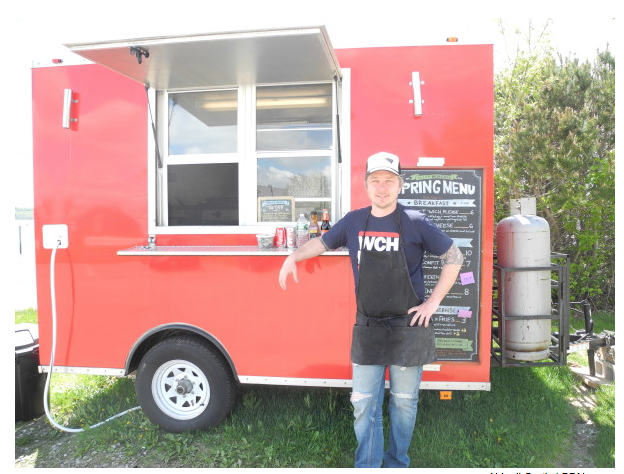
I’ve explored many different way to sell fried chicken sandwiches on my food trailer. Based on experience this is a menu item that really does work!
Prep: To be fair, make the decision to serve fried chicken thigh sandwiches on your food truck, and you are letting yourself in for a fair amount of prep time, or at least, more than you’d have if you were using chicken breasts. Why? Because while it’s easy to find plenty of boneless, skinless chicken thighs from your butcher or wholesaler, finding them with the bones removed but the skin intact can be trickier.
Instead, you’ll have to buy them with their bones and skin (that’s okay, they’re cheaper that way), and debone them yourself. Depending on your volume, this can use up a fair amount of your morning prep time, though I’ve found that I can whip through ten pounds in just a few minutes. It’s a little bit of extra effort, but it’s time well spent to deliver an amazing fried chicken sandwich that will keep your customers coming back.
Download Now: My Food Business Model Canvas with Template
Plus, raw deboned chicken thighs hold exceptionally well in the refrigerator; throw them in a salt water or even flavored brine, if you’re feeling fancy, and you can go several days before cooking them.
Dredge: Here in the Northeast, almost every major distributor and restaurant supplier sells a dry dredging blend colloquially known as “Clam Fry,” since it’s most often used for frying up whole belly clams. It’s a pretty basic combination of wheat flour, corn flour, milk powder, and dehydrated eggs, and its major claim to fame is that it completely seals in moisture.

Deep fried chicken on a stick. Another profitable option that can be served creatively with a variety of dipping sauces.
But the properties that make it ideal for frying clams also make it wonderful for frying chicken thighs: All of the moisture of the meat is locked in, while the outside fries up to a beautiful golden brown. Best of all, it can be seasoned to your liking and applied dry; no messy batters or nonsense to gum up your hands and the inside of your truck.
Ask your distributor about scoring some clam fry for your fried chicken sandwich experiments, and resist the urge to start clam-frying everything you can think of and dropping it in the fryer, just to see what happens.
Fry oil: We love chicken thighs fried in peanut oil, but this can get expensive. Any bulk fryer oil will work, but look for brands that boast of “high stability” to ensure consistent, long-lasting results without necessitating constant fryer oil changes.
Brainstorming Your Signature Fried Chicken Sandwich
Fried chicken sandwiches are an ideal vehicle for showcasing your creativity and your talents as a cook. Because they are so familiar and ubiquitous, a fried chicken sandwich won’t scare off timid customers, and won’t have anyone writing off your truck as “too fancy.”
Everyone loves a fried chicken sandwich, but what will set yours apart (while increasing the “premium” perception of your product), are a few innovative twists. Here are a few ideas to get those creative juices flowing:
Make a classic, but make it perfectly. Sometimes, starting simply is the best way to introduce a new product. Rather than reinvent the wheel, try making the best possible version of a “classic” fried chicken sandwich. A really good, bakery-style bun or roll. Homemade mayonnaise or regional favorites, such as Duke’s Mayonnaise or Japanese Kewpie Mayo. Super-fine shredded romaine, or maybe a few scratch-made (or locally made) pickles. A killer fried chicken sandwich doesn’t always have to introduce new ideas…sometimes, you can just make an established formula even better.
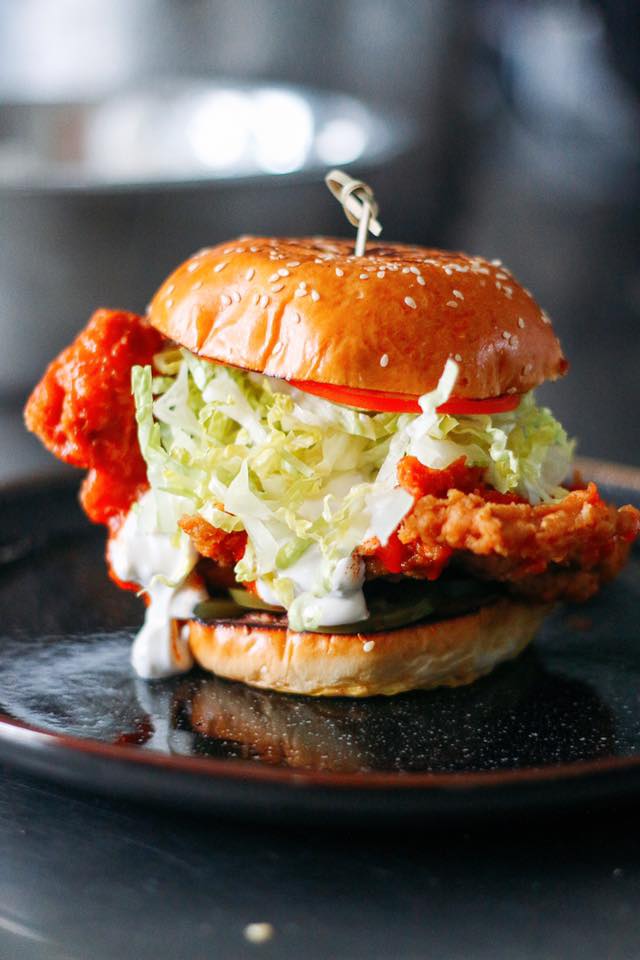
The “El Santanico.”
Dial up existing ideas. Think about some of your favorite fried chicken sandwiches, and then figure out how you can dial up the elements of that sandwich to make it uniquely yours.
For example, I love a Buffalo chicken sandwich*, because I’m basic like that. But on our food truck, a standard-issue hot-and-spicy chicken sandwich wouldn’t do, so I thought of ways to increase the wow-factor of each ingredient.
Instead of bottled wing sauce, the “El Santanico” used scratch-made sauce made with ghost chiles. We made our own blue cheese dressing, using big chunks of gorgonzola. A little shredded lettuce, a slice of tomato, and then, to dial up the heat even more, our own pickled blend of jalapenos and habaneros.
*Incidentally, fried chicken thighs make much better substitutes for wings than chicken breasts, thanks to that whole crunchy-fatty-skin thing they’ve got going on.
Take inspiration from other cuisines. Don’t be afraid to borrow ideas from other cultures and take-out concepts. If you love crummy Chinese food takeout as much as I do, consider taking a few fusion-y cues from their menus: An Orange Chicken sandwich topped with a quick-pickled slaw is an amazing combination. Or what about a Chicken Tikka Masala fried chicken sandwich, with fresh paneer cheese and shredded cabbage?
Join the Club: Find out what 40,000+ Food Entrepreneurs already Know for Free by Subscribing to our Newsletter.
When in doubt, punch ‘em with flavor. When dreaming up toppings and sauces for your fried chicken sandwiches, remember the basic rule of craveable sandwich creation: You need something crunchy, something spicy or sour, and something fatty. This simple rule can be applied to dozens (hundreds! thousands!) of potential combinations: Napa cabbage/pepperocinis/feta cheese. Coleslaw/pickled apples/ranch dressing. You get the idea.
Fried chicken sandwiches represent the perfect storm of profitability for your restaurant or food truck. They’re insanely profitable, easy to prepare, hold well during slow times, have a high perceived value, and most importantly, are enjoying their moment in the dining public’s spotlight. Figure out how you’re going to offer your creative take on this classic, and watch the dollars start rolling in.
Reader Note: Let us know what you think of this story. We plan to publish a regular series like this to help you identify winning and highly profitable menu items.
Sales plateaus keeping your business from growing? Tight margins making it hard to increase cashflow? In this series, we’ll be taking a look at the strategy and philosophy behind specific dishes that are guaranteed to skyrocket sales and boost the bottom line of your food business.
